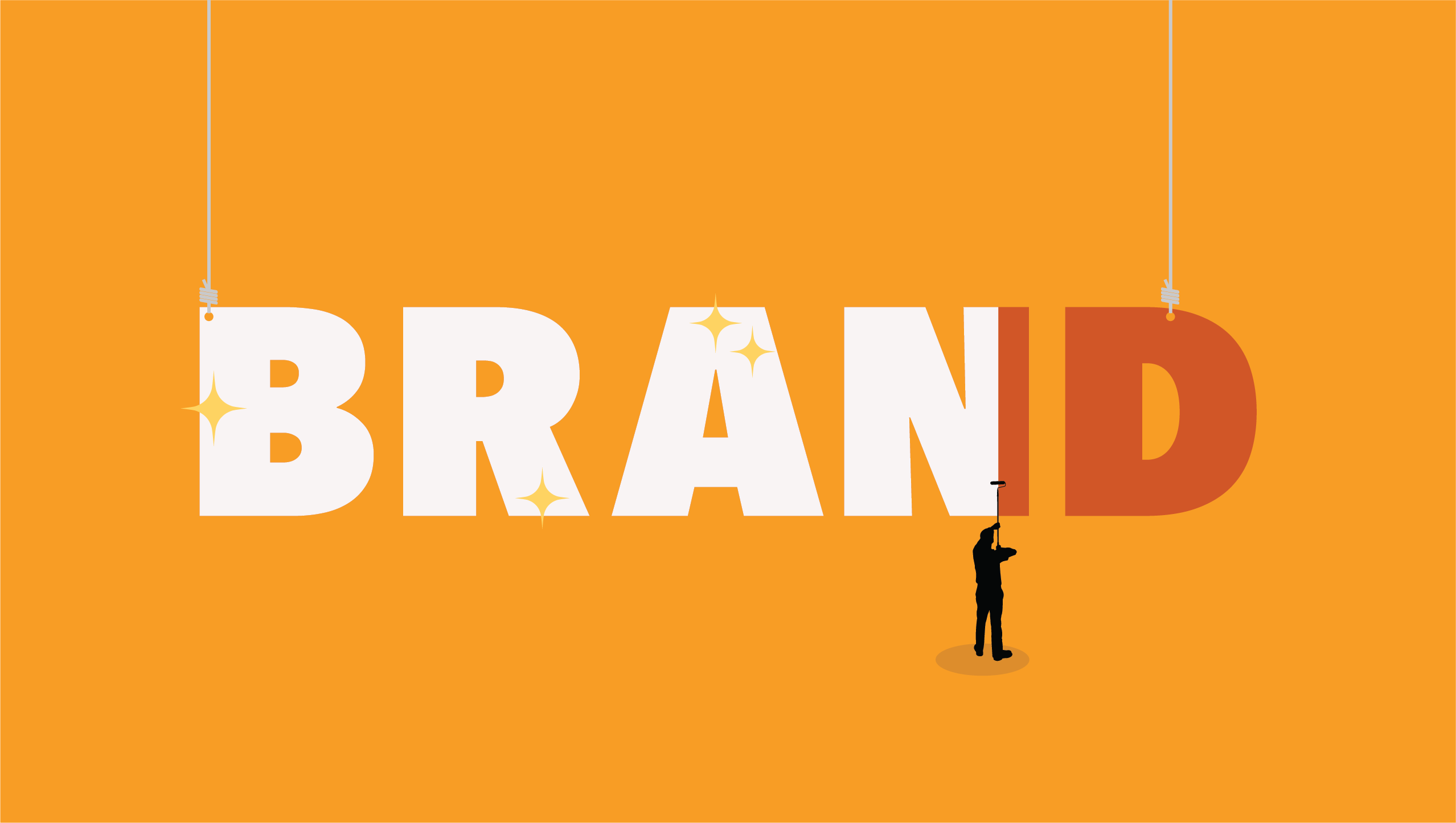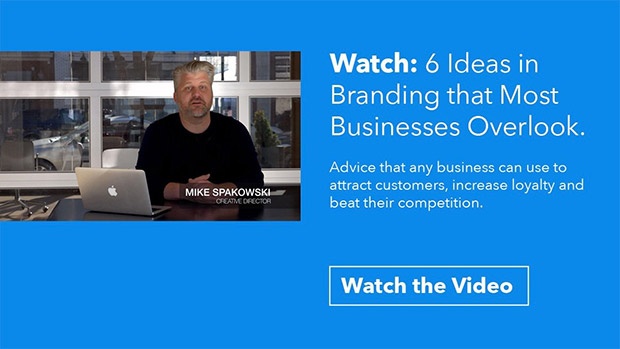Perfecting Your Rebranding Announcement & Rollout Plan
It’s time to launch a rebrand.
After months of brand development spent strategizing, writing, designing and editing, how you share a rebrand with the world is important; first impressions matter. And a launch that falls flat or gets negative feedback from audiences negates all the hard work and thought behind the rebrand, not to mention wasted time and money.
Branding can have a profound impact on your business—setting your company apart in its market, influencing curious prospects to take the plunge and become clients, and even convincing people to pay more for the same product or service. But a new brand has to be thoughtfully shared and appreciated by audiences for any of that to happen.
So how do you unveil a rebrand?
How to Create a Rebrand Rollout Plan
When announcing the rebrand, bigger is typically better. You want to make a splash.
One of our designers recently shared this video on Slack, showing how Staples revealed their new logo. This level of production (and the budget behind it) isn’t possible for most companies, but if it is for you, then we say go for it.
Business success starts with a solid brand. Download the Getting Started with Branding Guide to evaluate and improve yours.
For everyone else, making an impact requires as much planning as possible. First…
Decide whether the rollout will be executed by an in-house team or an agency.
As a branding agency, one of our clients launches a new brand or rebrand every month or so. Sometimes our clients engage us to help with the rebranding rollout, and sometimes we hand over the new brand identity we’ve created for their in-house team to launch it themselves. Both can be successful, as long as there’s collaboration and coordination among the people making the launch happen.
Once the team is in place, focus on the fundamentals:
Start with an audience-centered strategy.
Whenever we meet with a prospective client for a branding or marketing project, we ask a lot of questions. We work with such a diverse range of industries, so those questions run the gamut.
But we always ask one thing: Who is your audience?
The same should go for planning a rebranding announcement. For every audience, your company needs to be prepared to share the rebrand in a way that will resonate. That means considering both how and when the rebrand will be shared with each audience, and with what messaging.
Enter audience personas.
We’re marketers, so of course we love a good audience persona (or customer profile, user persona, buyer persona—they go by many names). When writing ad copy or researching SEO keywords, audience personas help us home in on exactly what people in the target audience are searching for, what problem they’re trying to solve, or what they want to accomplish.
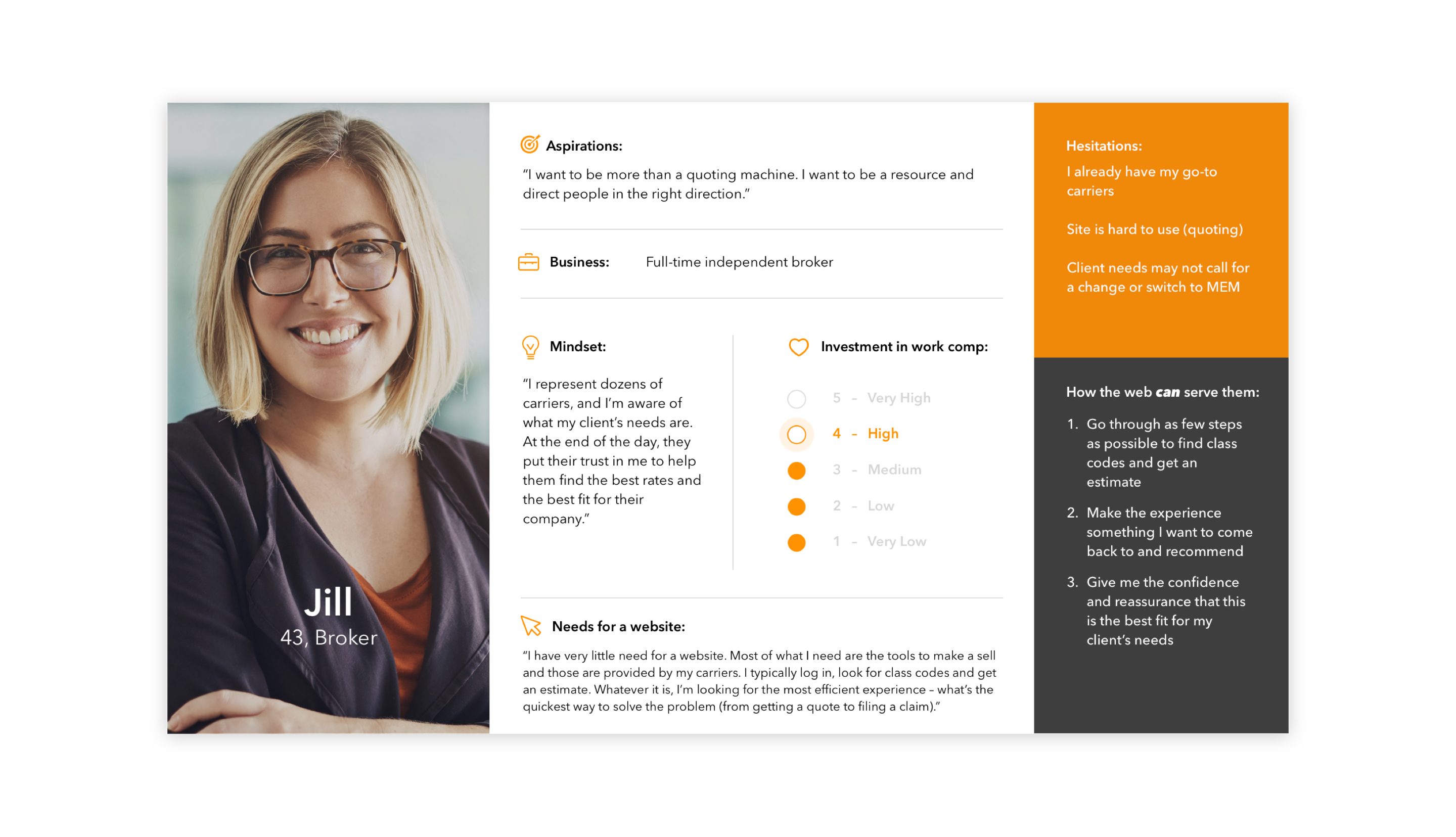
Above, an example of an audience persona we created when we designed a website for the newly rebranded Missouri Employers Mutual.
Chances are, audience personas probably played a key role in your rebrand strategy. For revealing the rebrand, expand on your company’s existing audience personas by thinking about what initial thoughts and questions each persona will have about your brand—and creating messaging that addresses each.
Let me illustrate everything so far with an example:
Imagine a B2B SaaS company is getting ready to announce a rebrand—including a new name and image. Internal team members would typically be told about the rebranding efforts before they’re shared publicly, through an all-staff meeting, webinar or conference. (And the earlier the better. Involving employees early in the rebranding process can help build buy-in and brand adoption, but more on that in a minute.) The messaging would need to address questions employees might have about their individual futures with the company and stress the importance of implementing the new brand in communications with clients.
For outside audiences, though, the timing, messaging and channels where the announcement is shared would be different. And clumping the rest of the audiences into one big “external audiences” group probably won’t cut it. Long-time, high-spend clients might expect to get a personal phone call from their sales rep about the rebrand, while new clients or vendors might be fine with learning about the new brand from an email or social media post.
But you can’t do everything at once.
Take inventory and prioritize.
The longer your business has been around, and the bigger it is, the more there will be to update. From business cards and social media profiles to environmental graphics and print ads, updating all of the marketing materials could take months. If you’re racing against the launch clock, outline what collateral needs to be updated right away, and what can be updated and shared after the launch.

 Above, orientation packets and signage were just a few elements of the new marketing materials and pieces that needed to be updated after a rebrand for the School District of University City.
Above, orientation packets and signage were just a few elements of the new marketing materials and pieces that needed to be updated after a rebrand for the School District of University City.
(And just a note—while we’ve broken down this blog post into sections, they’re not necessarily chronological. A lot of these elements need to be considered from the very first planning session. You might need to start outlining the website strategy before you tell your internal teams, for example, or vice versa. Every rollout plan is different but considering as many factors as possible early on will ensure it goes smoothly.)
Here’s a starter list of things you’ll probably need to update:
- Brand style guide – It’s important for teams to deliver a clear, unified message about the new brand. A brand style guide will give everyone within the organization an overview of the new brand identity, including brand guidelines on logo usage, colors and language.
- Press release – Some basic media relations can help the launch make the news, especially in niche industries. Don’t forget to update the new letterhead and boilerplate language.
- Sales materials — Depending on your timeline, some sales materials might have to be updated after the rebrand. These could include PowerPoint templates, sales slicks, business cards, folders and more.
- FAQs guide – For mergers or shifting markets and services, clients will likely have questions. Make sure your customer-facing teams are equipped with the right answers by providing them with example responses.
- Email marketing — Update both email marketing templates and the email signature template for employees.
- Physical pieces — Physical locations like offices, storefronts and even company vehicles might all need new signage.
- Online presence — We’ll talk about this more in a bit, but remember to update accounts across social media platforms, business listings on Google, and local or industry directories.
Attract customers, increase loyalty and beat the competition with solid branding. Get Six Ideas in Branding from Atomicdust’s Creative Director.
Don’t skimp on the internal roll-out.
Ideally, internal teams will have been included in the rebranding efforts well before the launch.
Humans are naturally skeptical of change, and hesitation about a rebrand is natural. But giving leadership teams and employees a platform where they can share their opinions and insights as part of the rebranding process can cultivate buy-in.
 Above, new company swag and business cards were shared with internal teams to celebrate the rebrand of AITX, formerly American Railcar Industries, Inc.
Above, new company swag and business cards were shared with internal teams to celebrate the rebrand of AITX, formerly American Railcar Industries, Inc.
We recommend interviewing or surveying teams at the beginning of the rebranding process. When they’re included in the early stages, team members feel heard and can impact decisions about the new brand. They’re more likely to take ownership of the rebrand, become brand ambassadors and share it enthusiastically with customers.
But for situations like mergers where the rebrand can’t be shared with teams until the information is public, brand adoption is still possible. Just like clients, employees will have questions and concerns. Foreseeing those, and being prepared with answers, will make employees feel considered and cared for.

Internal launch plans, like this one we created for Premise Health, help energize employees and prepare companies for success after a merger.
The energy surrounding an internal rebranding rollout is important, too. Sharing a rebrand with teams can be an opportunity to celebrate, build camaraderie and stoke excitement around the changes. And handing out swag with the company’s new look helps the switch feel real, right off the bat.
Bring the new brand identity to life online.
An updated website is one of the most important parts of a rebrand—but too often, it’s an afterthought. If a name change is part of your rebrand, then the domain of your website is likely changing… meaning all of your URLs will be, too.
A company’s website is its only salesperson that works 24/7, so incorporating website updates into the rebrand implementation plan early on is vital in making sure there aren’t major holes in the transition. You don’t want to lose any authority or traffic because of broken links or a tanked domain authority.
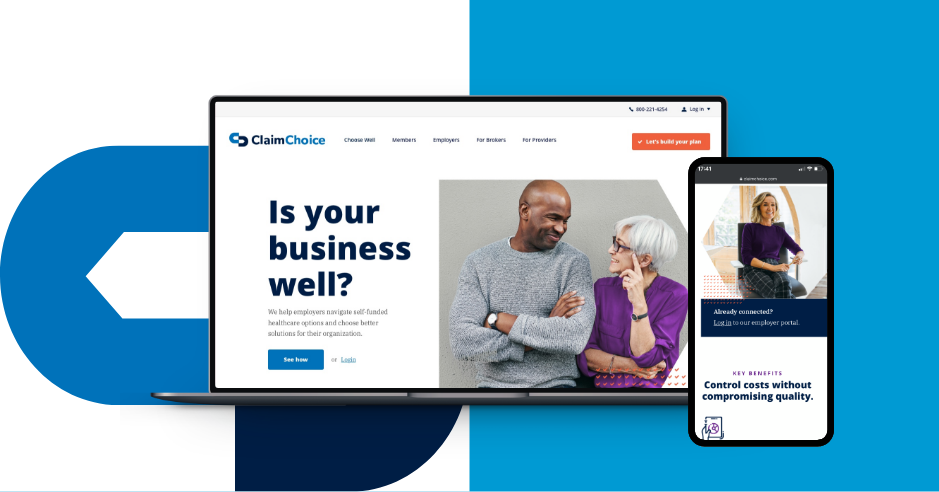 Above, the rebrand for ClaimChoice preceded a new website with a strong user experience.
Above, the rebrand for ClaimChoice preceded a new website with a strong user experience.
Consider the technical aspects as well as usability and user experience. Will the old domain remain live for a few months after the launch to educate visitors about the rebrand? Or will it automatically redirect customers to the new homepage, with a pop-up or message bar at the top? Will the main navigation change drastically? If so, can a search function help ensure users can still find what they need?
The same goes for social media pages and listings outside of the website. Updating directories and local listings right away, with backlinks to the new site, can help begin building domain authority.
Just like sharing the new brand everywhere else, ensuring a smooth digital transition can go along way in the success of the company overall.
Create a launch calendar.
Start a spreadsheet, clean off the whiteboard or hop on a Google Jamboard—here’s where the planning nerds among us really have fun. A launch calendar should incorporate both the day-of launch schedule and long-term needs.
Take the B2B SaaS company from earlier. The launch day schedule could include down-to-the-minute updates on when the press release and emails will be sent out, what time social posts will be shared and who is responsible for each. A few weeks or months later, the calendar might list things like updated swag for teams, or signage on buildings.
Today’s a great day to build your brand. Get ideas and advice for creating a brand your clients can’t stop raving about with the Atomicdust newsletter. Sign up now.
Evolve your messaging.
How you talk about the brand on the day of will be a lot different than how the brand is expressed and communicated six months or a year later.
Initially, company messaging might need to include the rebrand story—the reasoning and rationale behind the new brand, whether it’s explaining a merger, name change, expanding services or simply an evolution of the brand. But down the line, as more audiences and customers become familiar with the new branding or company name, messaging can shift to focus more on differentiators, brand language and brand values.
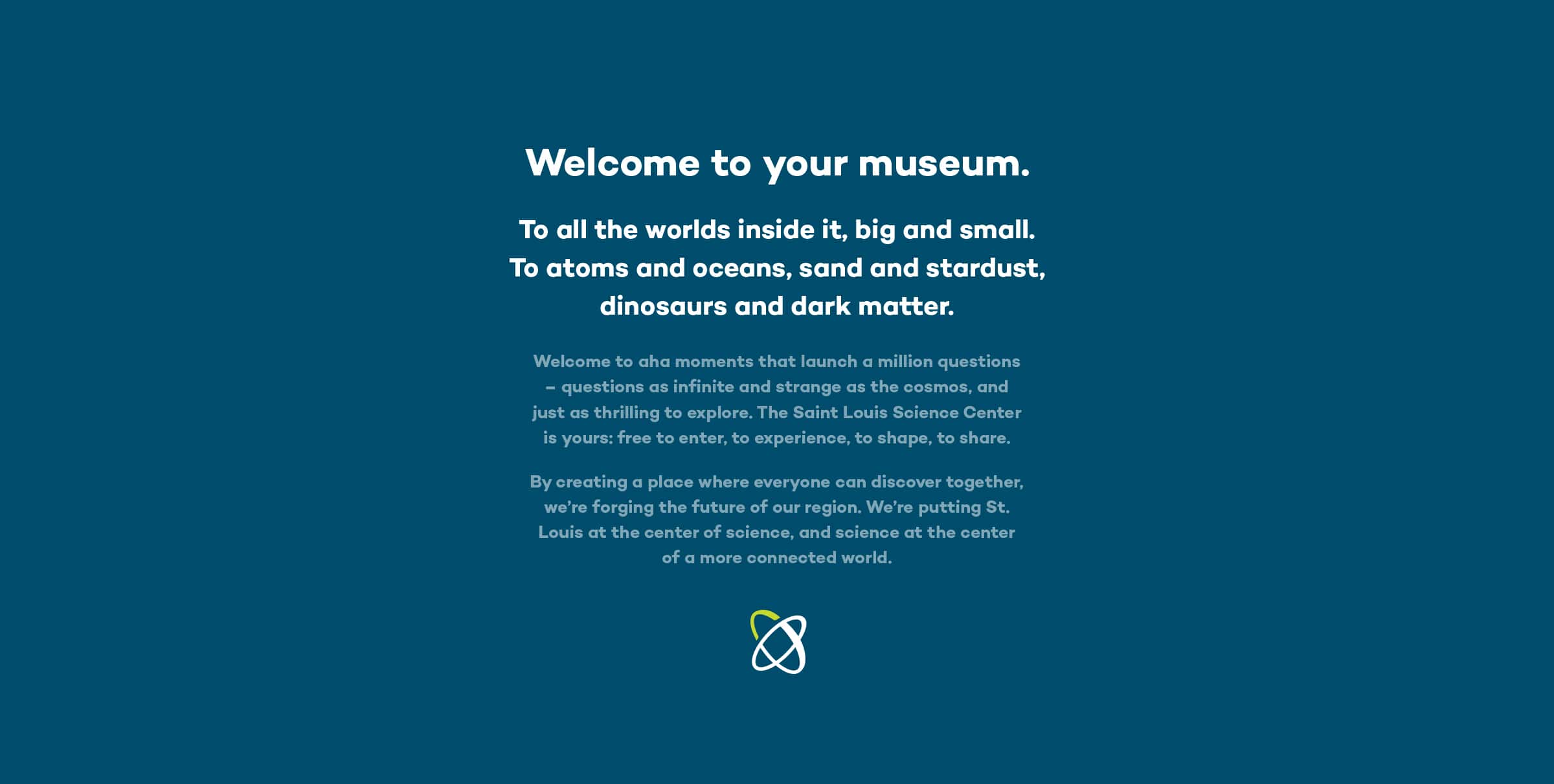 Above, new brand messaging from the Saint Louis Science Center rebrand.
Above, new brand messaging from the Saint Louis Science Center rebrand.
While maintaining brand consistency is important, your brand isn’t set in stone. You’ve spent time (and probably a significant financial investment) crafting and perfecting the brand. It can, and should, evolve.
Before the launch, outline how language about the rebrand will evolve over the first six to 12 months, and use it when creating marketing materials and ads throughout the first year after the rebrand.
As your customers experience the new brand, and employees find new ways to deliver on the promises you’ve made, evolving brand language—one part of a carefully planned brand launch plan—can help the brand take your company to new heights.
